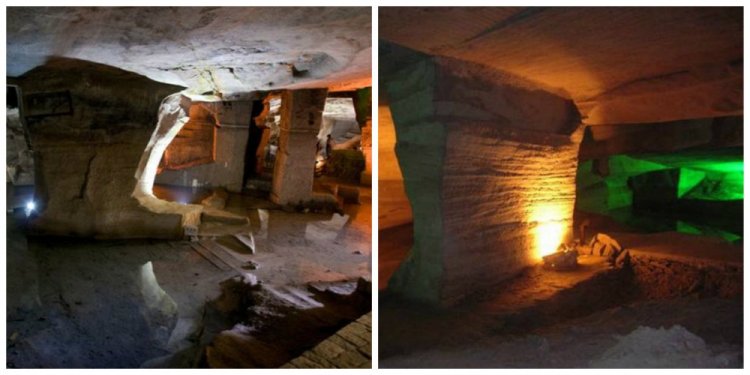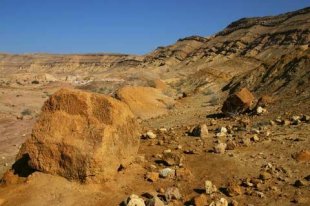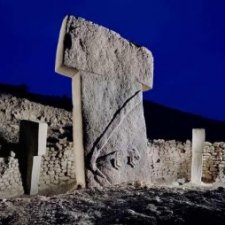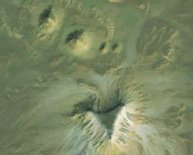
Latest discoveries on Earth

- Credit: stock.xchng
Intro
Puzzling ancient finds have a way of captivating the public, perhaps because it's just too easy to dream up interesting explanations for how and why things exist.
These seven archaeological discoveries have managed to stay hot topics despite their age, appearing on magazine covers year after year and inspiring new theories for their existence along the way.
- Credit: NASA/GSFC/METI/ERSDAC/JAROS, and U.S./Japan ASTER Science Team
Atlantis
First described by the ancient Greek historian Plato in 360 B.C., the mythological island was supposedly a great naval power before sinking into the sea over 10, 000 years ago in a catastrophic event.
Archaeologists debate the actual historical existence of the island as well as its most plausible location if it ever actually existed among the many sunken ruins discovered around the world. But even without definitive proof, Atlantis continues to engage the popular imagination like few other archaeological mysteries out there.
- Credit: stock.xchng
Stonehenge
Sprucing up an otherwise docile English field, the prehistoric monument commonly known as Stonehenge is one of the world's most famous landmarks.
The ring of megalithic stones was built approximately 4, 000 years ago and was an impressive feat for the primitive people who constructed it but that's about all archaeologists know for sure. None of the theories on the original purpose of Stonehenge, which range from an astronomical observatory to a religious temple of healing, has ever been, well, set in stone.
 Credit: dreamstime
Credit: dreamstime
Ancient Animal Traps
Low stone walls crisscrossing the deserts of Israel, Egypt and Jordan have puzzled archaeologists since their discovery by pilots in the early 20th century.
The chain of lines some up to 40 miles (64 kilometers) long and nicknamed "kites" by scientists for their appearance from the air date to 300 B.C., but were abandoned long ago.
The mystery might be somewhat clearer thanks to a recent study claiming that the purpose of the kites was to funnel wild animals toward a small pit, where they could easily be killed in large numbers. This efficient system suggests that local hunters knew more about the behavior of local fauna than previously thought.
- Credit: Antikythera Mechanism Research Project
Antikythera Mechanism
Found in the sunken wreckage of a Greek cargo ship that is at least 2, 000 years old, the circular bronze artifact contains a maze of interlocking gears and mysterious characters etched all over its exposed faces. Originally thought to be a kind of navigational astrolabe, archaeologists continue to uncover its uses and now know that it was, at the very least, a highly intricate astronomical calendar.
It is still the most sophisticated device ever found from that period, preceding the next appearance of similar devices by 1, 000 years.
- Credit: NASA/GSFC/MITI/ERSDAC/JAROS, and U.S./Japan ASTER Science Team
 Nazca Lines
Nazca LinesFrom the ground, the Nazca Lines of Peru are nothing spectacular. However, seen from the air, from which they were first spotted by commercial aircraft in the 1920s and 30s, they are staggering.
Archaeologists agree the enormous shapes there are hundreds of them, ranging from geometric lines to complicated depictions of animals, plants and imaginary figures were made over 2, 000 years ago by people of the pre-Inca Nazca culture, who simply removed the red surface pebbles to reveal the lighter earth below in designs of their choice.
Just why they did it remains enigmatic, prompting conspiracy theorists to float ideas about alien landings and ancient astrology. The lines were more likely to have been a ritual communication method with the Nazca's deities, say archaeologists.
- Credit: stock.xchng
The Great Pyramids
Built almost 5, 000 years ago in what is now Cairo, the three-pyramid complex with the largest, Khufu, dominating the site is a testament to the ancient Egyptians' reverence for their Pharaohs and the intricacies of their belief in the afterlife.
Archaeologists are still discovering new tunnels and shafts built within the pyramids, and are still searching for clues on who built the great monuments, how and why, even today.
-
Gobekli Tepe
Humans first settled into permanents towns, farmed and then built temples, in that order, starting in 8, 000 B.C. Or did they?
An amazing archaeological discovery made in 1994 at Gobekli Tepe, a rural area of Turkey, has blown that hypothesis apart, prompting new questions about the evolution of civilization.
Containing multiple rings of huge stone pillars carved with scenes of animals and dating to the 10th millennium B.C., Gobekli Tepe is considered the world's oldest place of worship. Yet evidence also suggests the people who built it were semi-nomadic hunters, likely unaware of agriculture, which followed in the area only five centuries later. Because of Gobekli Tepe, archaeologists now have to ask which came first. Did building projects like this lead to settlement, and not vice-versa, as always thought?





















